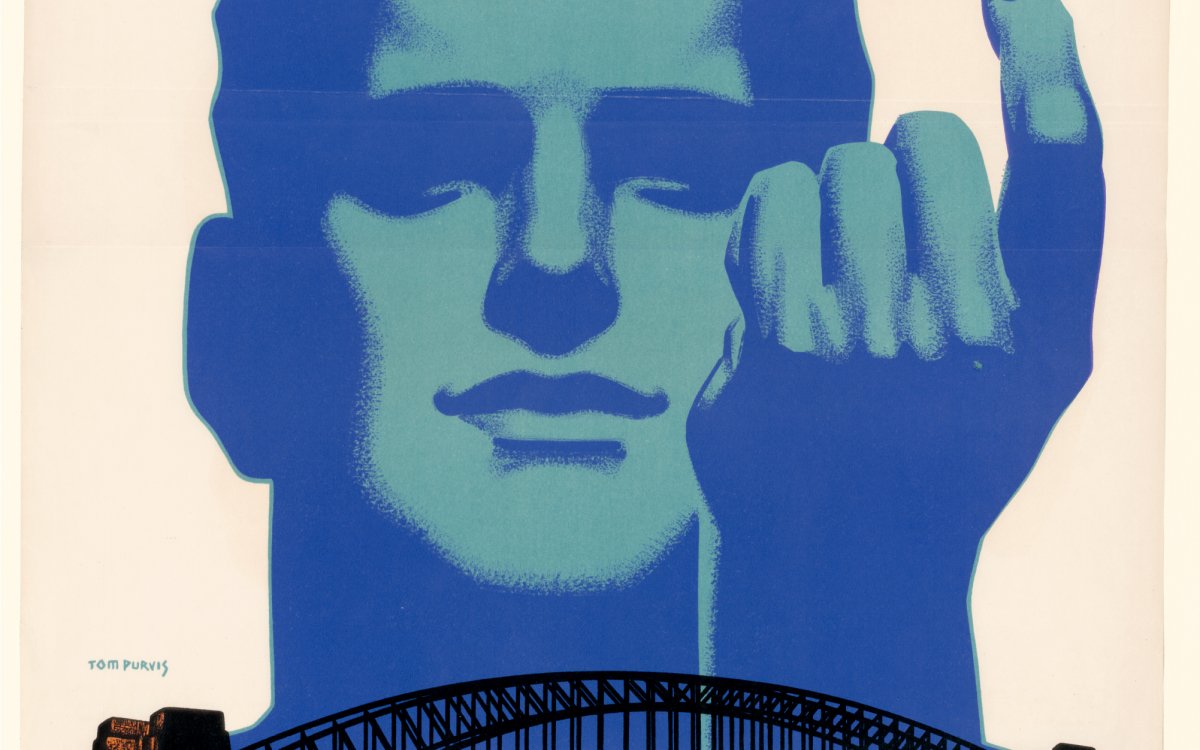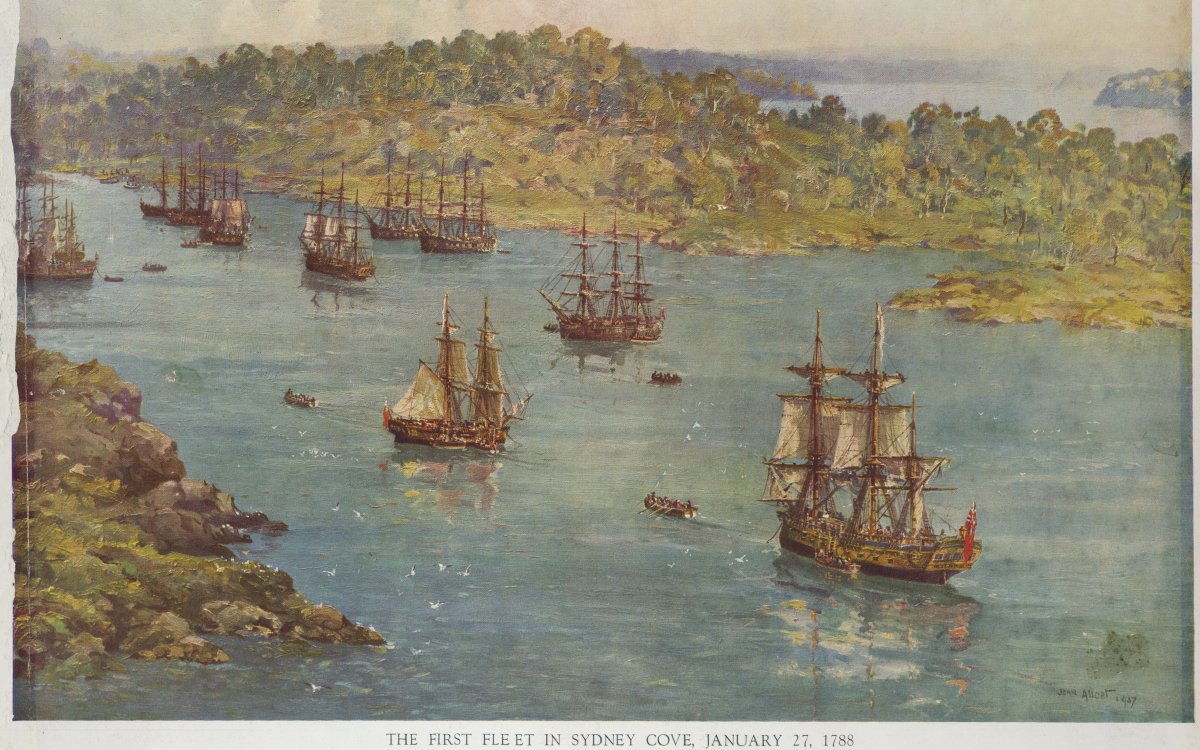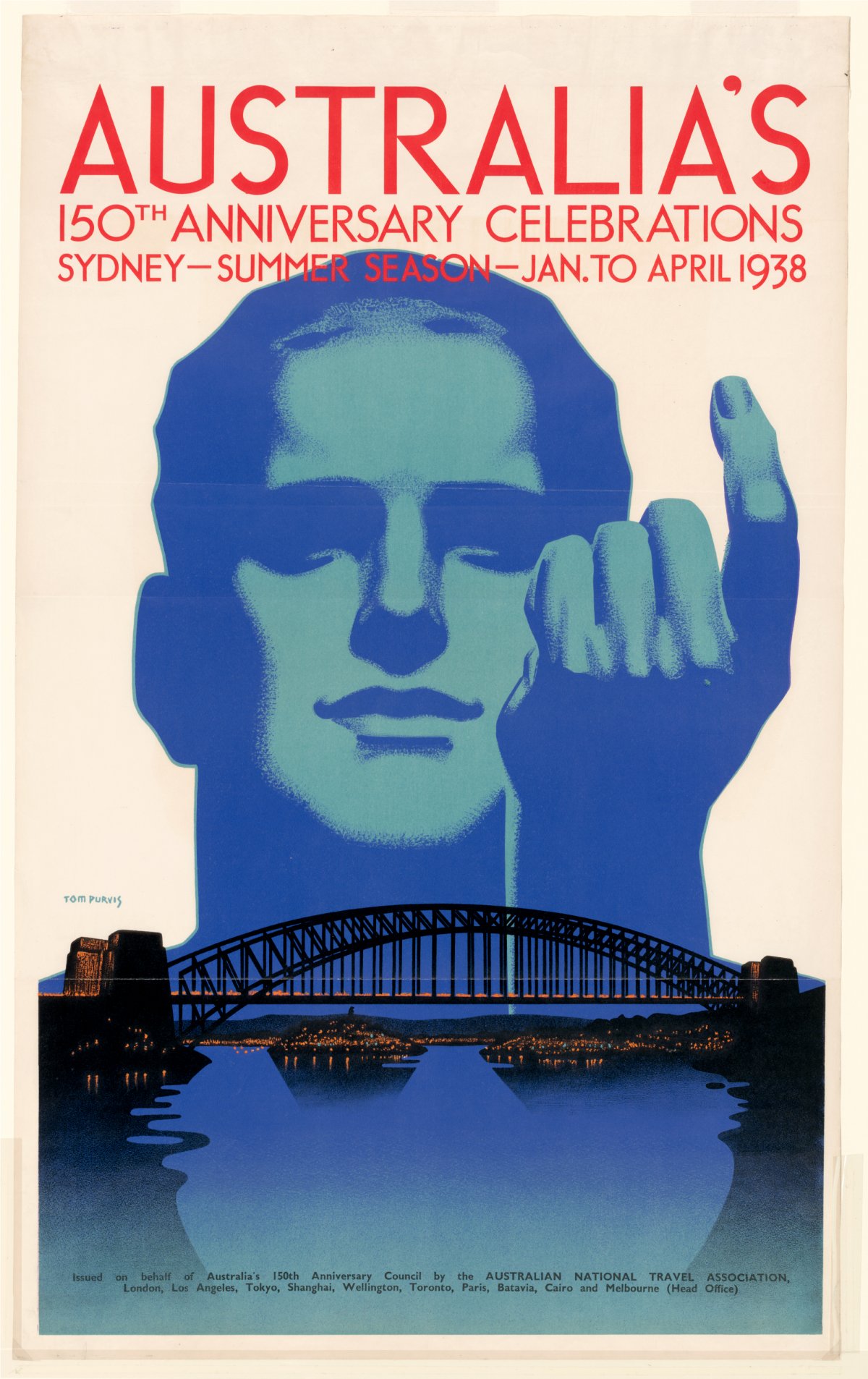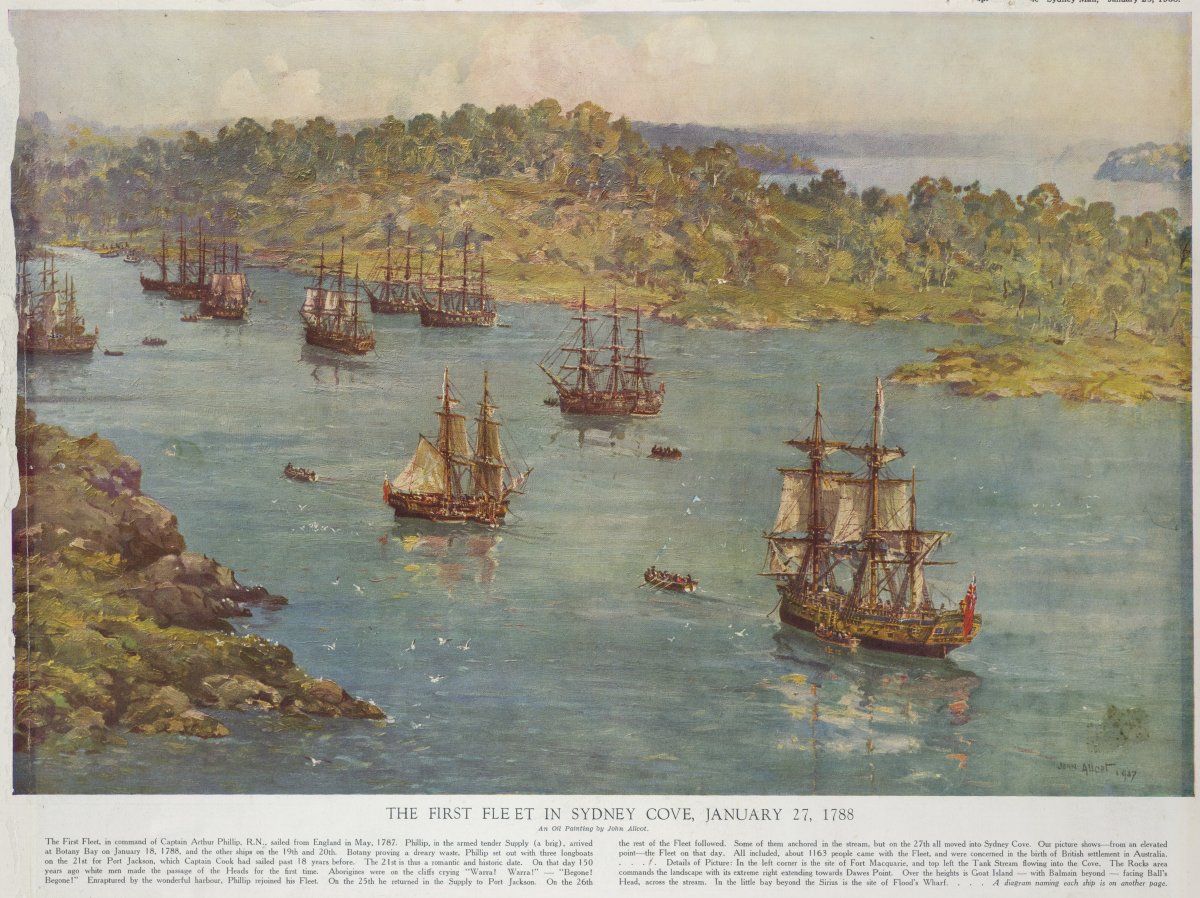The 1938 festivities that marked 150 years since the landing of the First Fleet celebrated Australia’s progress and development as a nation. The Australian National Travel Association chose Tom Purvis, at the time the ‘biggest name in British commercial design’, to create sesquicentenary posters for London billboards. Purvis called poster design the ‘Cinderella of the Arts’, noting the successful design techniques employed in late 1930s Nazi propaganda. He became a vigorous advocate of the power of art to serve Britain.
This poster is from the Australian National Travel Association’s report on publicity obtained for Australia’s 150th anniversary celebrations.

Purvis, Tom, 1888-1959 & Australia's 150th Anniversary Celebrations Council & Australian National Travel Association. (1938). Australia's 150th anniversary celebrations Sydney - summer season - January to April 1938 [picture] / issued on behalf of Australia's 150th anniversary Council by the Australian National Travel Association. https://nla.gov.au/nla.obj-135689940
This picture, published as a supplement to The Sydney Mail on 26 January 1938, is from an 1937 oil painting by John Allcot. The New South Wales Government organised a festival for 26 January 1938 to celebrate the 150th anniversary of the arrival of the First Fleet. The festival included re-enactments of the arrival of Captain Arthur Phillip (the Commander of the First Fleet and the first Governor of New South Wales) at Port Jackson and of the flag-raising ceremony in Sydney Cove.
Prior to 1935, 26 January was known as First Landing Day or Foundation Day in Australian states and territories, but from 1935 onwards all jurisdictions used the name Australia Day to mark the date. Australia Day was not consistently celebrated as a public holiday across Australia until 1994.

Allcot, John, 1888-1973. (1938). The First Fleet in Sydney Cove, January 27, 1788 [picture] / John Allcot, 1937. http://nla.gov.au/nla.obj-135776002
1. Prior to displaying the poster and newspaper reproduction, conduct a class brainstorm about Australia Day to establish students’ current understanding.
Purvis’ poster and The Sydney Mail reproduction of Allcot’s 1788 painting relate to Australia Day in 1938. Challenge your students to use their skills as historians to explore each source, analysing both the text and imagery, to discover the message it conveys. As a class, discuss what these sources can tell us about the origins of Australia Day.
When discussing the poster, the following prompts may be useful:
- What is an anniversary? What anniversary are the words on the poster referring to?
- Why do you think the man is holding up a finger?
- What bridge is shown on the poster? Why?
- What does the small print at the bottom of the poster tell us?
- What do you think this poster might have been used for?
- Were Aboriginal people active participants in celebrating Australia Day in 1938?
Watch the video with the class to consolidate the discussion.
Display the reproduction of Allcot’s painting and complete the same process of exploration.
The following prompts may be useful:
- What does the picture show?
- What does the caption under the image say?
- Why might a newspaper have printed this spread on 26 January 1938?
- Why do you think this particular image was used?
2. Australia Day has always meant different things to different Australians. Challenge your students to imagine what people may have thought when they saw the 1938 newspaper supplement showing the First Fleet. Students should brainstorm a list of different people who may have seen the newspaper (e.g. a child, a farmer, an Aboriginal person, an officer in the navy). Ask each student (or group of students) to select a person from the list and to look at the picture from that person’s perspective.
Ask students share their ideas about their chosen person’s perspective. They may like to role-play the person when presenting their ideas.
3. Ask your students to think about Australia Day today. Consider some of the ways it is recognised and what it means to them. Invite your students to design a poster that could be used to promote the next Australia Day.

